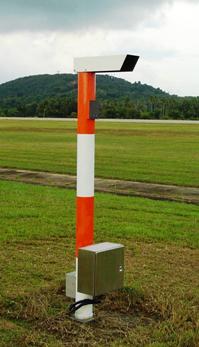Transmissometer
A transmissometer is an optical measuring device for determining a dust or gas concentration.
Measuring principle
A beam of light illuminates a measurement volume . The attenuation of the light is a measure of the concentration of dust , gas (using light with a suitable wavelength) or a liquid in the measuring volume. The transmission is measured
with = emitted light and = received light.
The transmission can only assume a number between 0 and 1. Where means that no absorption or scattering occurs ( so-called “smoke-free” when measuring dust ). In practice, the transmission is usually given in percent.
Applications
Transmissometry is mainly used in industrial measurement technology and environmental technology for measuring pollutants in exhaust gases .
- z. B. Emissions measurement in accordance with environmental protection laws (in Germany, e.g. 13/17/23 BImschG or TA-Luft).
- SCHLUMOSED measures the transparency of sewage sludge over time during the separation of wastewater.
- This device is used to measure the visibility range ( RVR ) in air traffic .
literature
- Frank Früngel: A pulse-optical transmissometer for registering the standard visual range between about 40 m and ∞ (videograph) . In: Archives for Meteorology, Geophysics and Bioclimatology, Series B . tape 10 , no. 2 , February 1960, p. 252-263 , doi : 10.1007 / BF02246573 .




